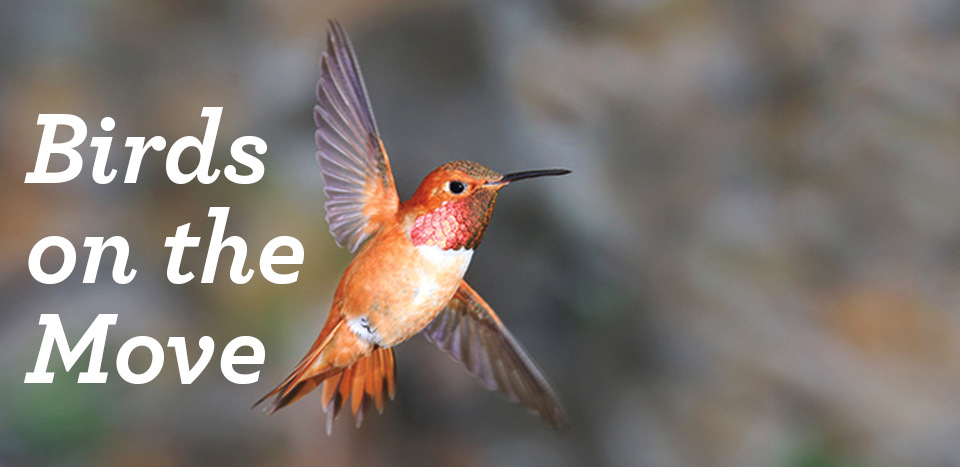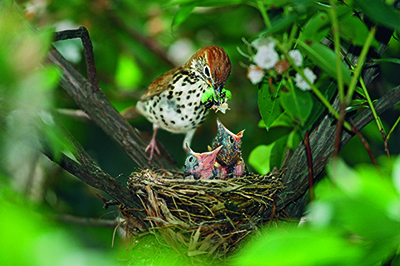
Audubon Adventures

Activities
 Activity 1
Activity 1
North and South
 Teacher-led Classroom Activity
Teacher-led Classroom Activity
Science/Research Skills/Writing/Art
 What are the travel routes, habitat requirements, and characteristics of selected migratory birds?
What are the travel routes, habitat requirements, and characteristics of selected migratory birds?
Objective:
Students learn amazing facts about the journeys of birds that migrate and create a large-size field guide of selected species and share their learnings with others.
Students will need:
- Audubon Adventures “Birds on the Move” student magazine, either online or downloaded/printed PDF
- Reference materials on North American migratory species (online resources; field guides and other reference books)
- Art materials: large paper, colored pens/pencils/markers
Suggested time:
Three or more class periods plus homework time to research species and create a page for a class book; other sessions as necessary to correspond with contacts.
What to do:
- In advance, use the links provided to research the migratory birds listed below. Choose several or all to use for this activity. The list includes a mix of types of birds and migratory ranges, and some are likely to spend time in your region.
Selected Migratory Birds
- Backyard Birds
- Indigo Bunting
- Red-headed Woodpecker
- Ruby-throated Hummingbird
- Rufous Hummingbird
- Scarlet Tanager
- Song Sparrow
- Shorebirds/Seabirds
- Arctic Tern
- Herring Gull
- Red Knot
- Waterbirds/Wading Birds
- American White Pelican
- Mallard
- Snowy Egret
- Raptors
- Sharp-shinned Hawk
- Swainson’s Hawk
- Write the name of each bird you’ve chosen from the list above on a slip of paper. Make duplicates if necessary so there are enough for each student, pair of students, or small group of students. Place the slips of paper in a bag.
- With the whole class, review the content of the “Birds on the Move” student magazine. Have students take turns reading the following features aloud: the cover page; “Mi-greats! Amazing Migratory Bird Facts” (page 2); “How Do Birds Find Their Way?” (page 3). Follow up with a brief discussion of each article.
- Tell students they will be creating large-sized pages about migratory birds that will be compiled to create a “big book” class field guide to birds. The pages will be based on their research and include their writing and artwork.
- Have students take turns choosing a slip with a bird name from the bag.
- Give students guidelines for the pages they will create. The pages should include one or more images of the bird, either created by students or found online. Students should also write a physical description of the bird, what it eats, its habitat requirements, its migratory range, and other interesting information about the species.
- Once the pages are done, set aside class time for students to present their pages to the group before assembling them into a book. Make the book part of your class library. You might also arrange to display it in the library or other public area of the school.
Photos: Frank Leung/iStock; Ashley Peters.




